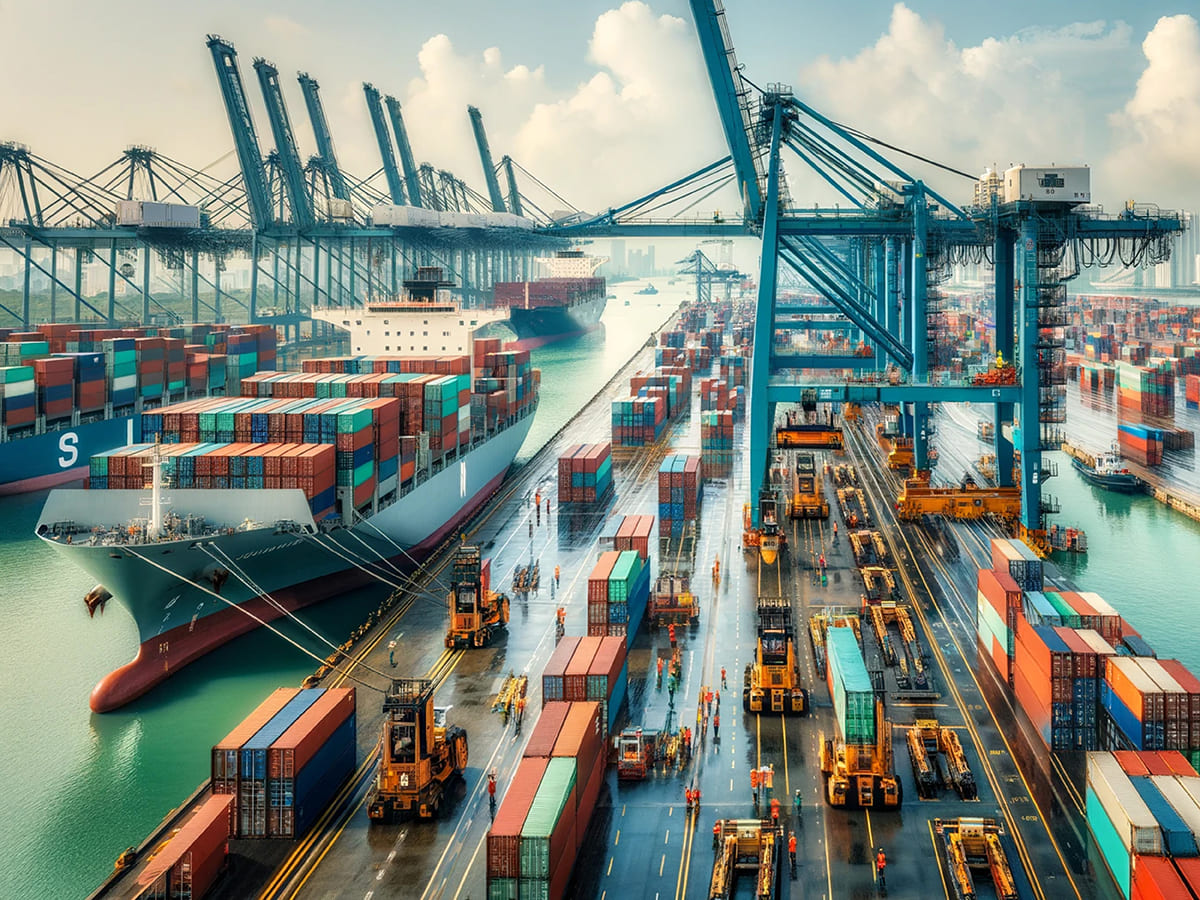Shipping delays and rising costs in Asia by Santa Fe Relocation

By Santa Fe Relocation
Overview of current challenges
Shipping delays in Singapore have more than doubled due to a shortage of ships and containers and increased congestion at ports. Due to ongoing supply chain challenges, this may lead to increased costs for those in the relocation industry. Average container prices, already on an uptrend, have spiked by 88% in the last two months.
Port congestion and increased transit times
Ships typically take routes through the Strait of Malacca, docking in Singapore. The increased volume of vessels has led to severe congestion at the port. It takes about seven days for each ship to be berthed, compared to one to two days previously. Singapore’s port has received around 1,000 ships this month alone, compared to just over 600 in April. Analysts report that port congestion is at an all-time high, with limited spare capacity to handle the increased volumes. While some additional capacity at Tuas Port will be available at the end of the year, port users need to anticipate delays in their cargo movements for the next few months.
Impact on shipping costs and availability
As vessels remain at sea for longer periods, exporting countries need more ships and container equipment. Freight forwarders’ costs to ship goods have tripled, forcing them to pass these costs on to customers. With China taking most of the available space, vessels are too full to accommodate additional cargo, leading to the prioritisation of urgent shipments. The recent surge in demand and significant disruptions in shipping routes have led to a critical shortage of containers in Asia. This shortage affects carriers and shippers, resulting in extended transit times and an anticipated rise in freight charges as companies struggle to secure bookings. The lack of vessel and container capacity is causing extreme volatility in container prices and availability, with possible delays in departure or at transit ports beyond our control.
Regional and sector-specific challenges
Analysts suggest the current situation could last for months, affecting neighbouring ports in ASEAN. Some sectors in Singapore, particularly manufacturing and e-commerce, are expected to be hit harder by these disruptions. Manufacturing firms that rely on sea freight for raw materials and e-commerce businesses dealing with more oversized items may face significant delays.
Alternative shipping methods and temporary storage solutions
One alternative for shipping household goods is switching from sea freight to air freight, though this will significantly increase costs. Air freight can cost five to twenty times more than sea freight. While it may be a viable option for smaller or urgent shipments, it is not a general substitute for maritime transportation, which remains essential. To mitigate these challenges, we advise customers to ship essential items via air freight and keep the rest in temporary storage in critical areas such as Singapore and China until the situation normalises. This approach, though not ideal, can help manage costs and logistics more effectively until the shipping situation improves.
Our commitment to keeping everyone informed
Reliable and timely information is crucial during these challenging times. We are committed to providing transparent updates to help our clients make informed decisions. Any extra costs incurred due to the current shipping challenges will be passed on to our clients at cost. We will explore alternative options to avoid delays and additional costs. However, the situation remains unpredictable, potentially leading to increased freight costs, storage in transit fees, and demurrage costs. We will always advise our clients as soon as possible regarding any such changes.
For further assistance and personalised advice, please contact your designated Santa Fe Relocation consultant.
Ruth Lockwood
Head of Strategic Sales -South East Asia
Santa Fe Relocation
ruth.lockwood@santaferelo.com
